Whimsical, fairytale-ish, and a spiritual environment that looks like it gave inspiration to the stone trolls in the Frozen animation movie, Otagi Nenbutsu ji Temple is the first of its kind where the story of faith and art merges into one.
With its remote location on the hills of Arashiyama and its quiet surroundings, Otagi Nenbutsuji is one of the most underrated places in Kyoto and is unlike the usually serious and solemn Buddhist temples in Japan or anywhere else for that matter.
Instead, you will be surrounded by thousands of happy and amusing faces carved in stone, bringing a vibe of joy and smiles to whoever sets foot in the area. Though the carved stones might look like a fancy whim of a talented sculptor, there is a deep story behind the sculptures that make this Japanese shrine one of the must-visit temples in Kyoto.
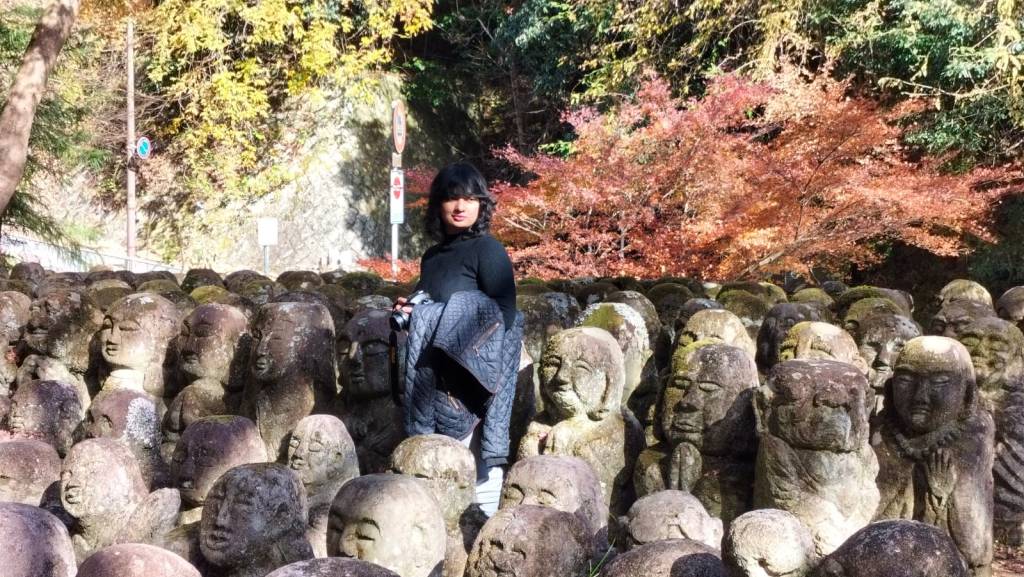
in Kyoto, to photograph them Photo Credit: AWO staff
Otagi Nenbutsuji is also surrounded by nature making it one of the best places in Kyoto for autumn leaves during the fall months. To enjoy the nearby foliage as well, you can walk through the Saga Torimono Street to Adashino Nenbutsuji temple that also has striking autumn colors.
Note: We recommend getting a pocket Wi-Fi to access google maps and nearby restaurants as you need to know the way to walk through the area to truly experience it. Or you can book a private guide to take you to Otagi and other places in Arashiyama according to your liking.
An 8th Century Japanese Temple
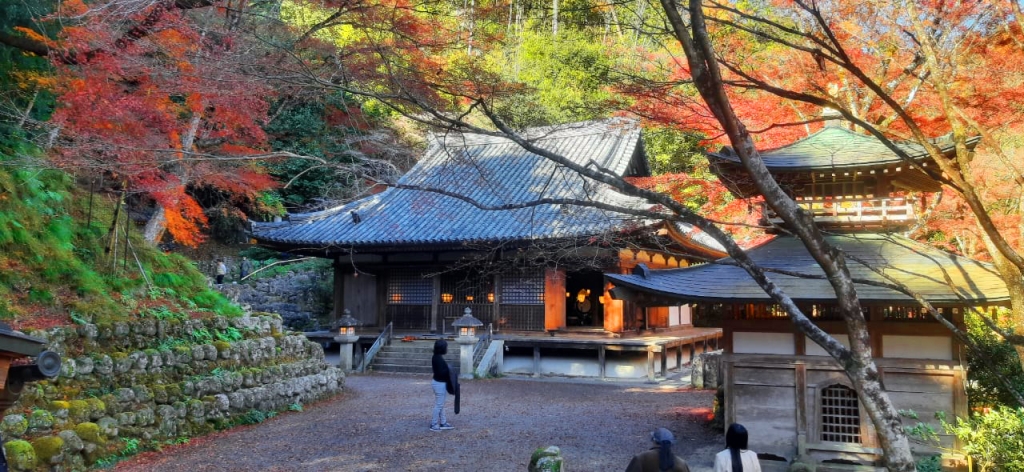
the sculpture made by Kocho Nishimura Photo Credit: AWO staff
Though the shrine now sits in the western hills of Arayashima, Otagi Nenbutsuji was originally situated in Higashiyama during the 8th century. Unfortunately, the temple was a constant victim to floods and fires until only the three main structures (the main temple, the gate, and the Jizo hall) were left.
To preserve what was left of Otagi, it was moved to its current location in 1922. Despite the relocation, the temple was still hit with misfortune when a typhoon damaged it in 1950 and the shrine had to be restored again. However, despite the change, the temple’s misfortune continued until 1955 when a new head priest was appointed to Otagi Nenbutsuji.
The Priest & The Creation of The Sculptures
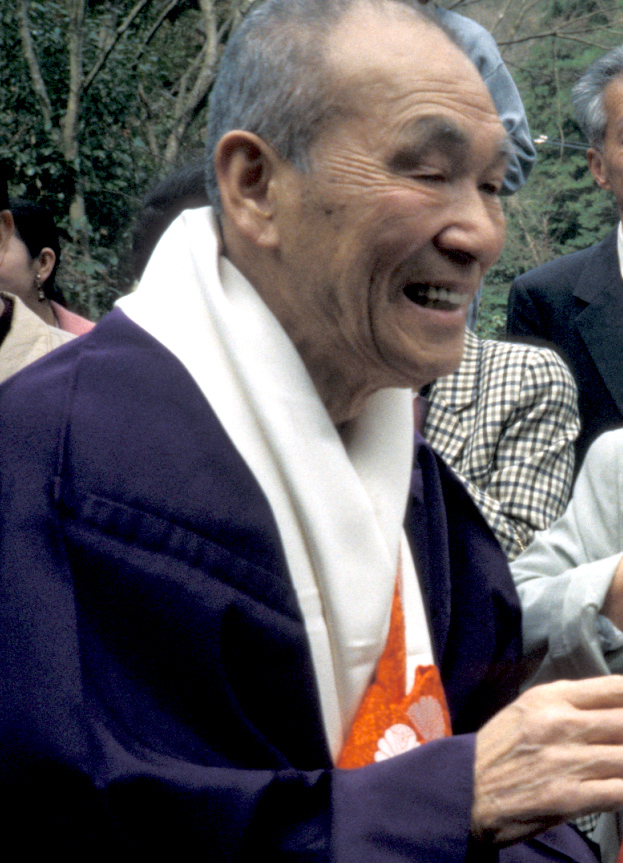
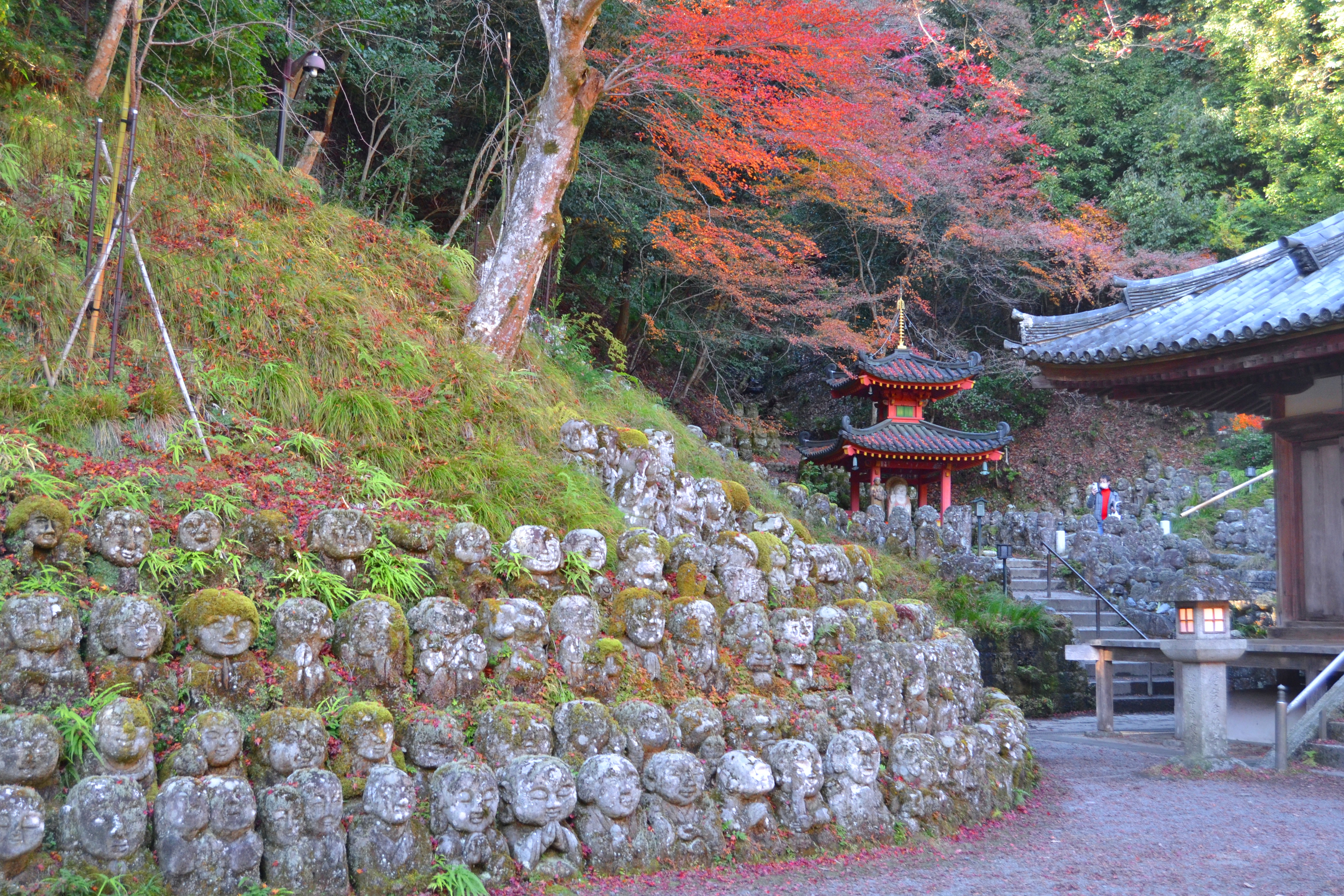
Like a good luck charm come to protect the temple from all its misfortune, a man named Kocho Nishimura was appointed as the head priest of Otagi Nenbutsuji. Not only was Nishimura a religious man he was also a sculpturor who would use his skills to shift the tide of the temple’sbad omen to a good one.
Nishimura’s talent of creating Buddhist statues made him a sought-out teacher for young sculpturers. With students learning under him, he began the restoration process of renovating the temple and giving it a unique touch unlike any other shrines in Japan with a never-seen-before transformation.
Over a long process of 30 years, the sculptures took form, and during the 1980s it became the temple’s main project to surround the shrine with thousands of creative and happy rakan statues. What’s remarkable is that these statues were actually created by amateur artists who came to learn sculpting from Nishimura.
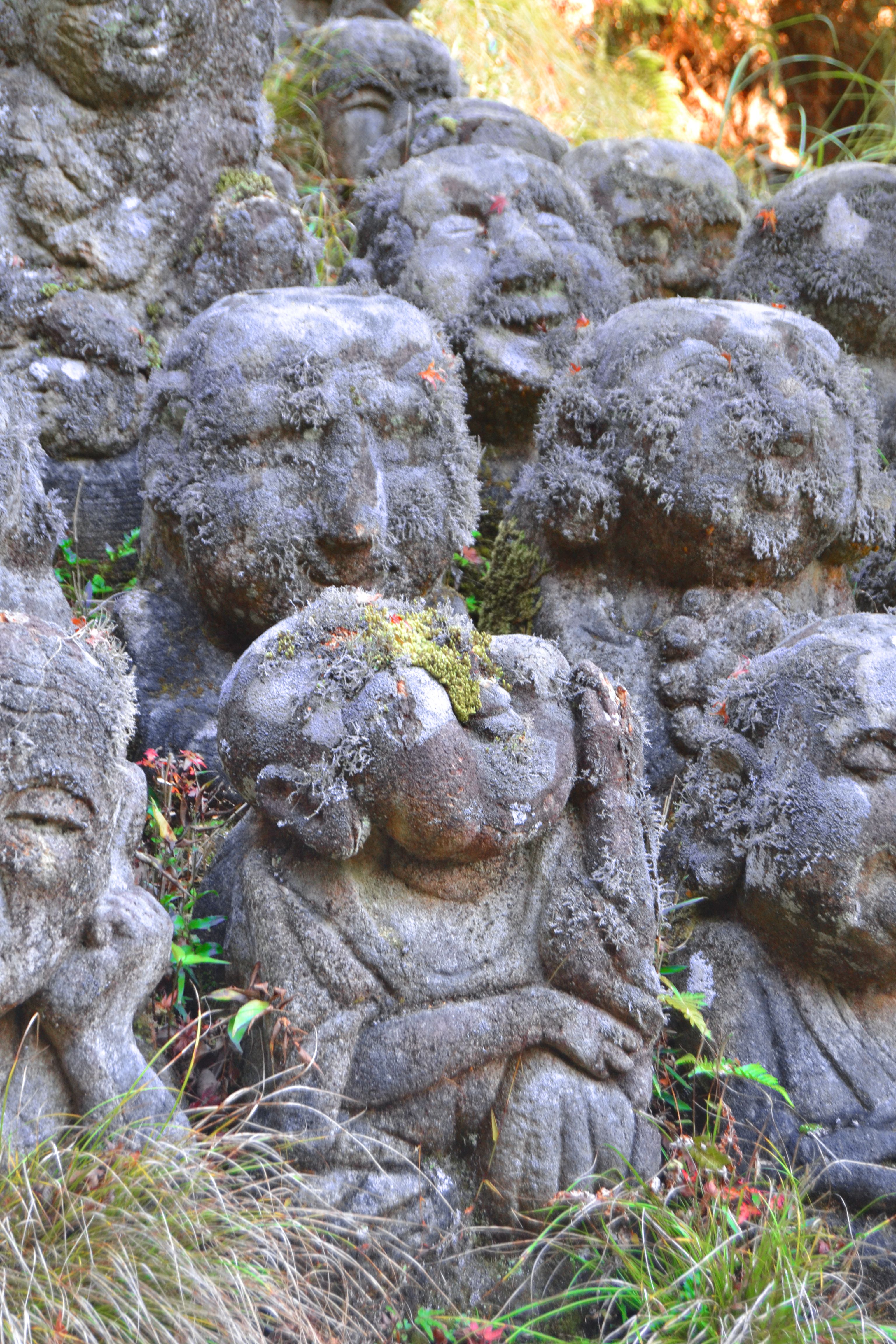
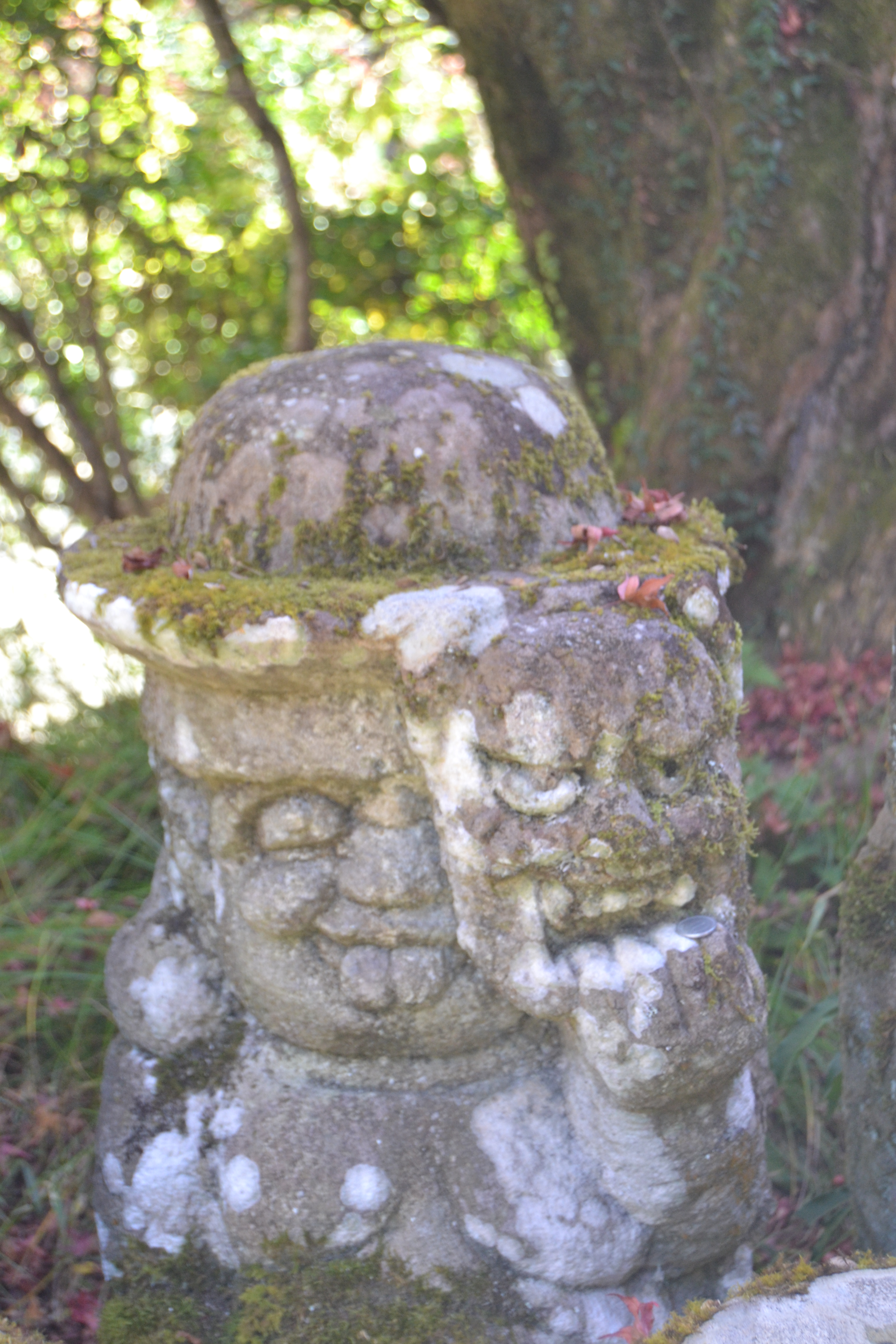
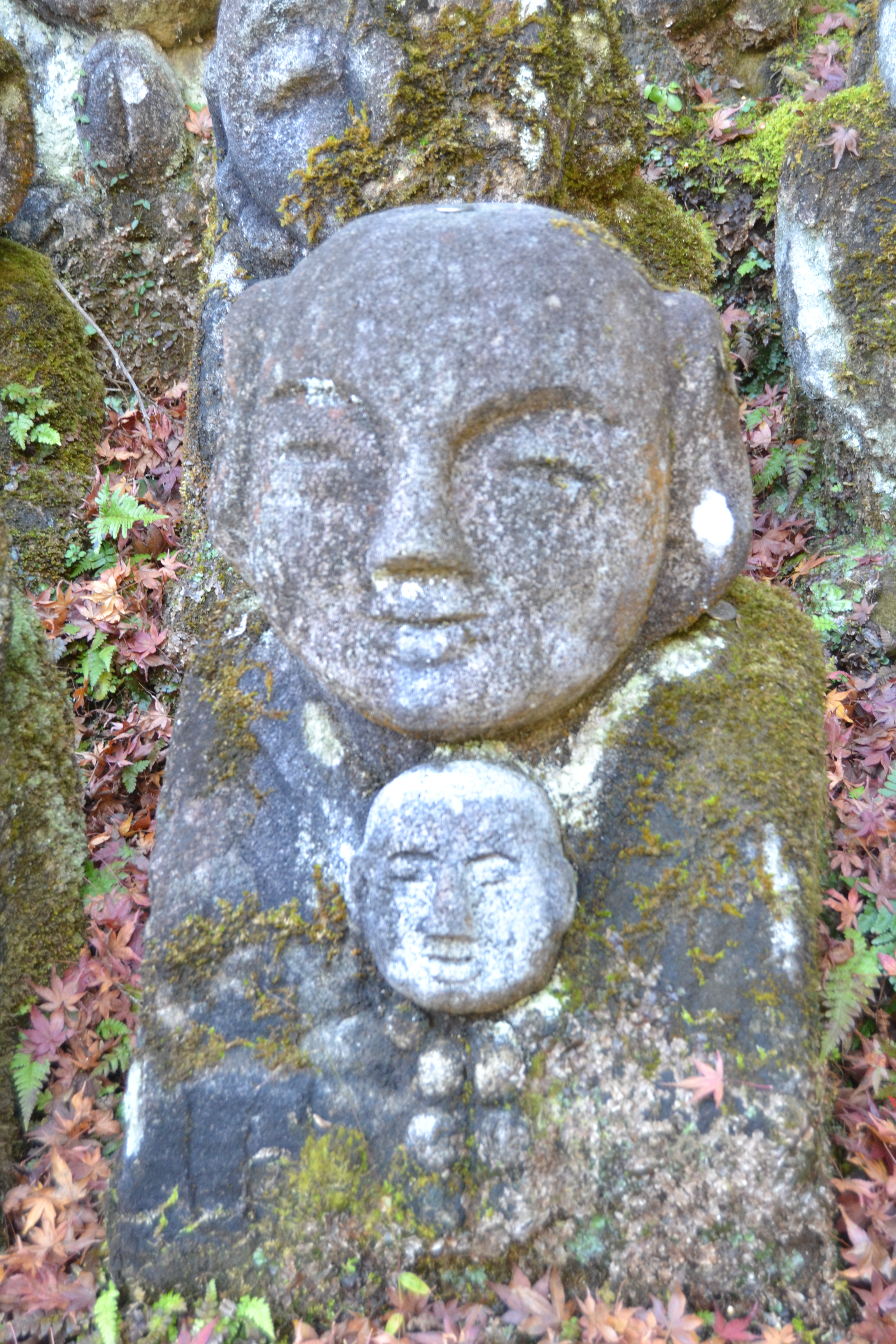
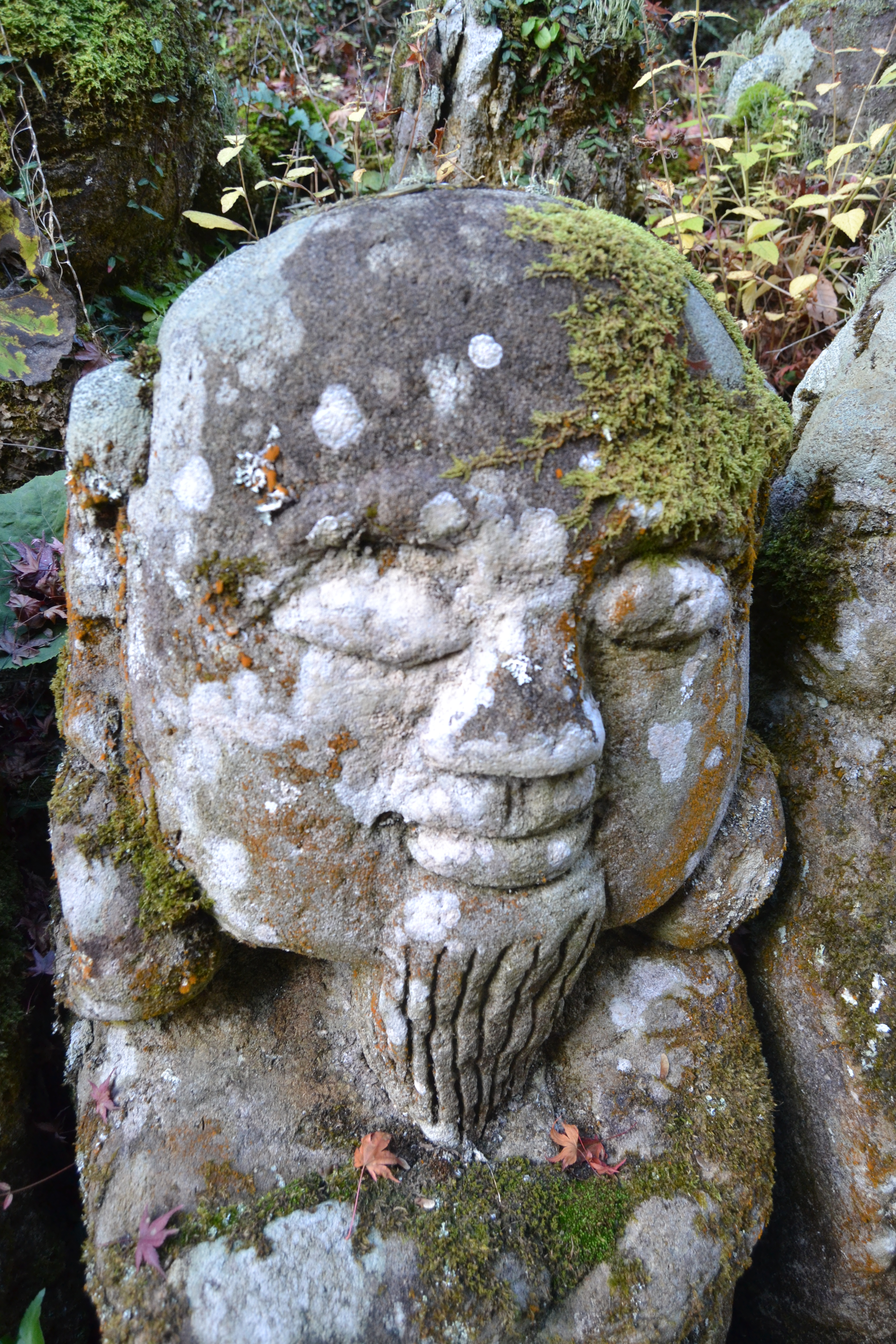
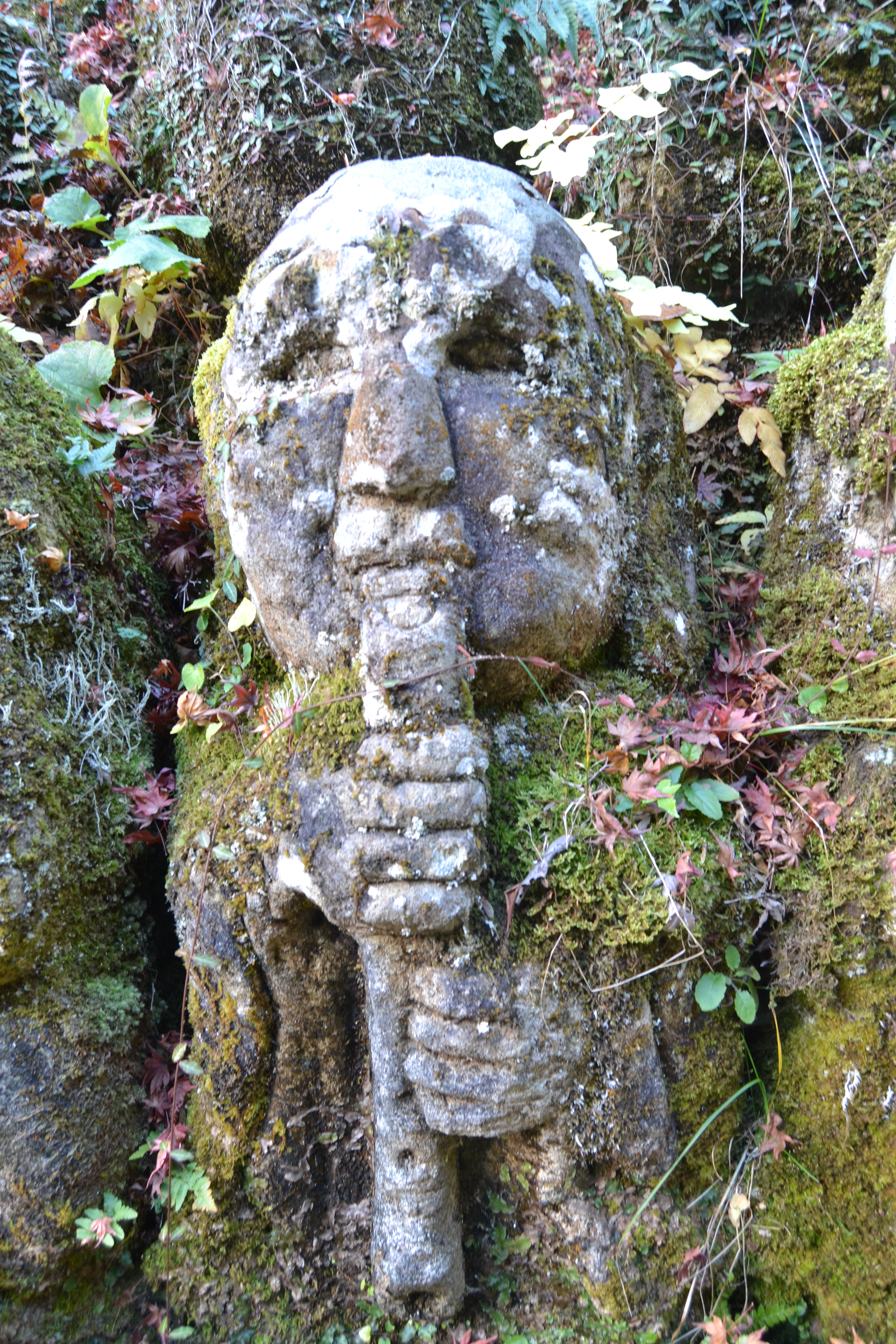
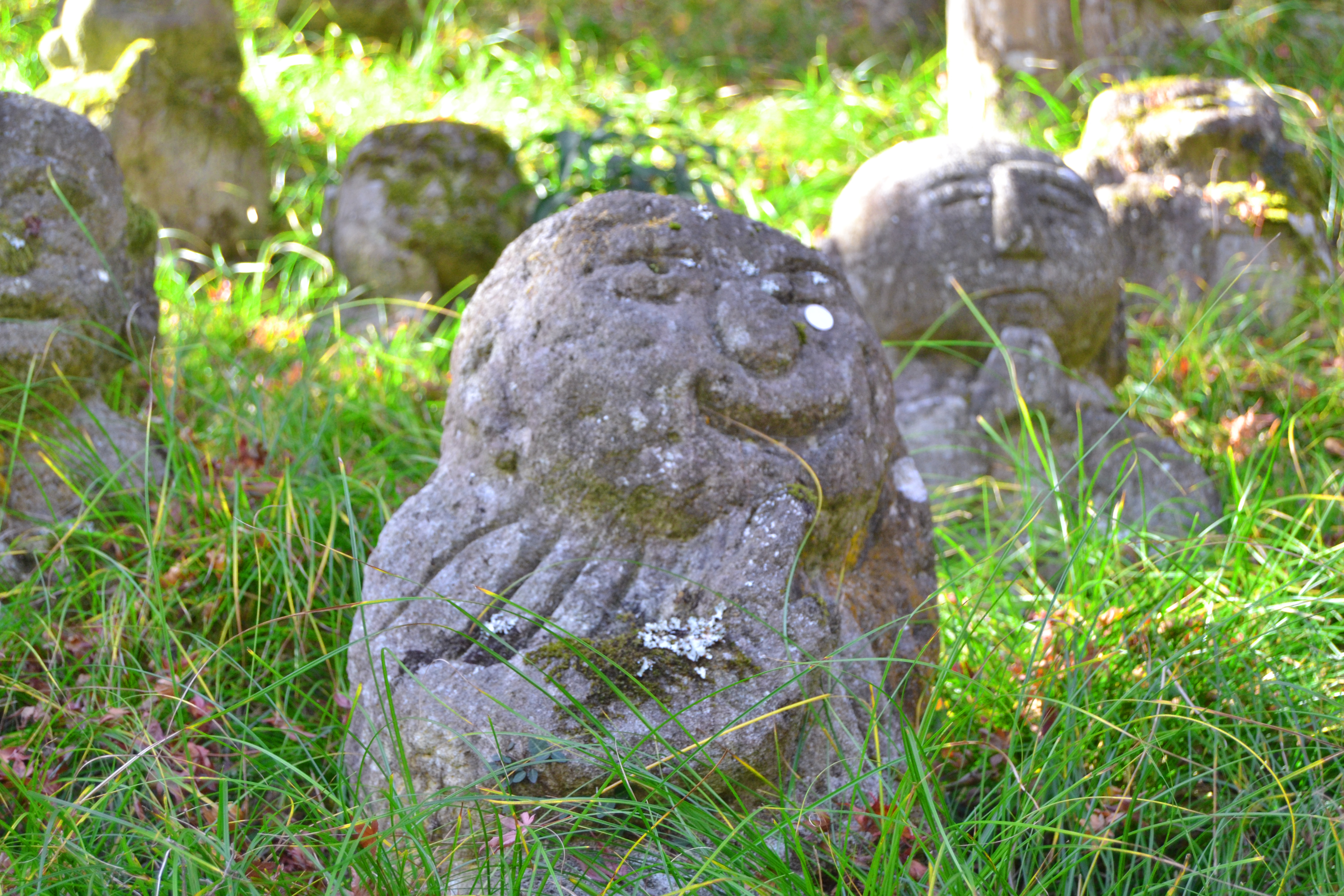
Nishimura encouraged his students to bring forth the unique, personal figures hiding in the stones and hence the 1200 whimsical Buddhist stone sculptures were born with their own set of personalities. Each statue is shown with different actions, hinting at the individual sculptor’s passion and hobbies.
Some figures can be seen reading a book to a child, laughing, or even holding a camera. There are also structures that look like twins and some playing musical instruments.
The temple continued Nishimura’s lineage with his son and grandson taking over the shrine today. They successfully keep Otagi alive by infusing art (like photography and music) to relay Budhha’s message across the world.
Plan your Japan itinerary from scratch through our contact page
Best Autumn Viewing Spot in Kyoto Among Whimsical Statues
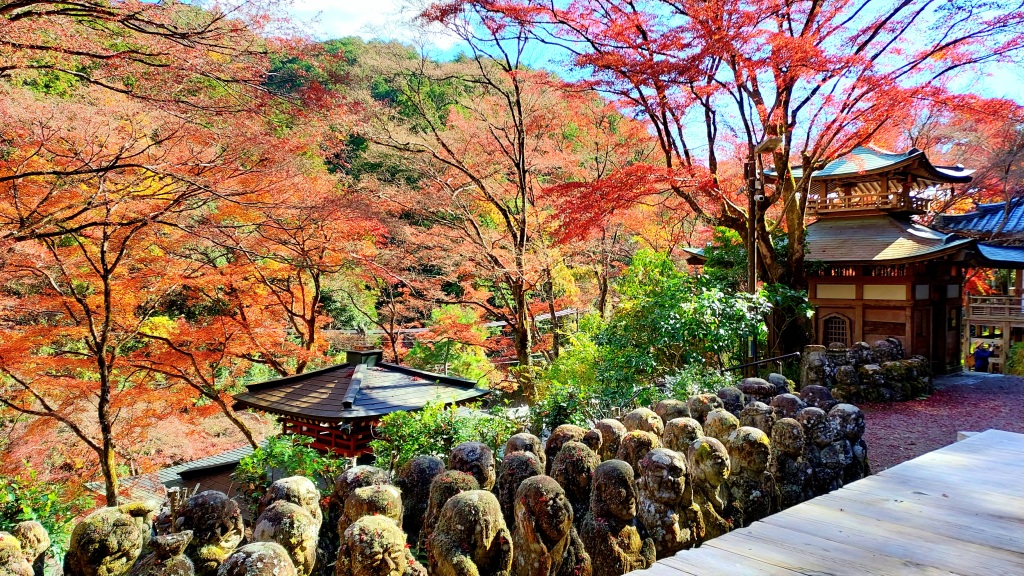
Photo Credit: Ameena Navab
Otagi is a fascinating area surrounded by Kyoto’s green trees and towering mountains. Visitors can go around the temple structures to take in the unique art created by the hands of talented artists and Nishumura’s vision.
And it’s not just the quirky, amusing sculptures that gives this place its beauty. During autumn (October – Early December), this place becomes a breath-taking site of vivid orange, red and yellow colors that surrounds the matching red pagodas and the grey and green joyful statues. With fewer people and crowd, you can thoroughly enjoy the colors of the fall and calm winds of the season making Otagi Nenbutsuji one of the best autumn viewing spots in Kyoto. It’s almost like a fantasy come real.
Ring The Three Bells

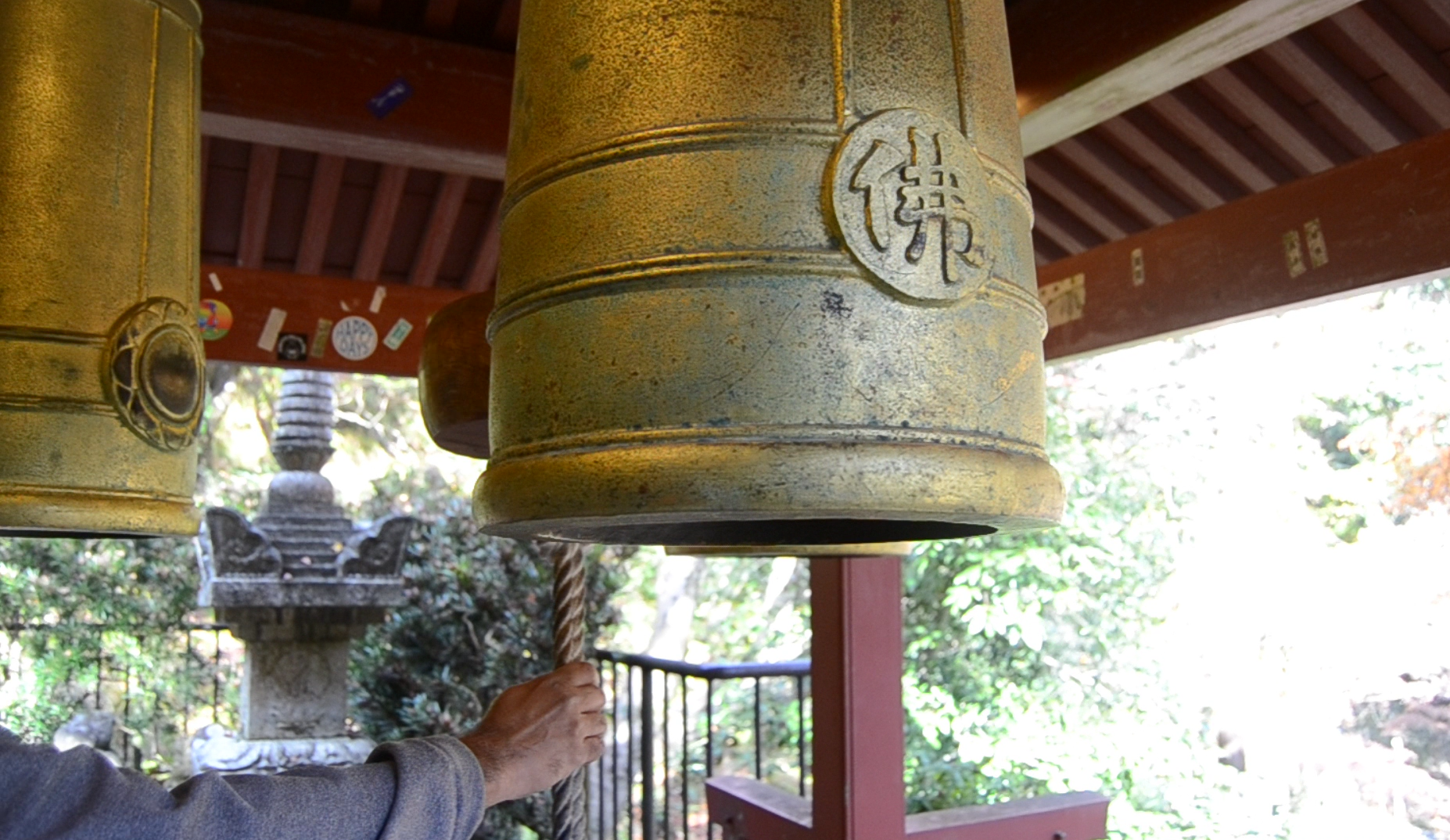
Upon your entry into Otagi Nenbutsuji, a set of stairs lead to the main area of the temple. On the way, you’ll notice a small red pagoda with three huge golden bells under it. These bells known as the “Bells of Three Treasures” are representation of Buddha, dharma and the priests. Everyone, foreigners and visitors included, can use the heavy rope to touch all three bells once, giving out a beautiful ringing sound that resonates throughout the temple. This tune is said to convey the heart of the Buddha to the rest of the world.
Note: These bells are for religious purposes and not for playing around. While you’re free to ring the bells, please be respectful and not play around with it.
Hope for Cure
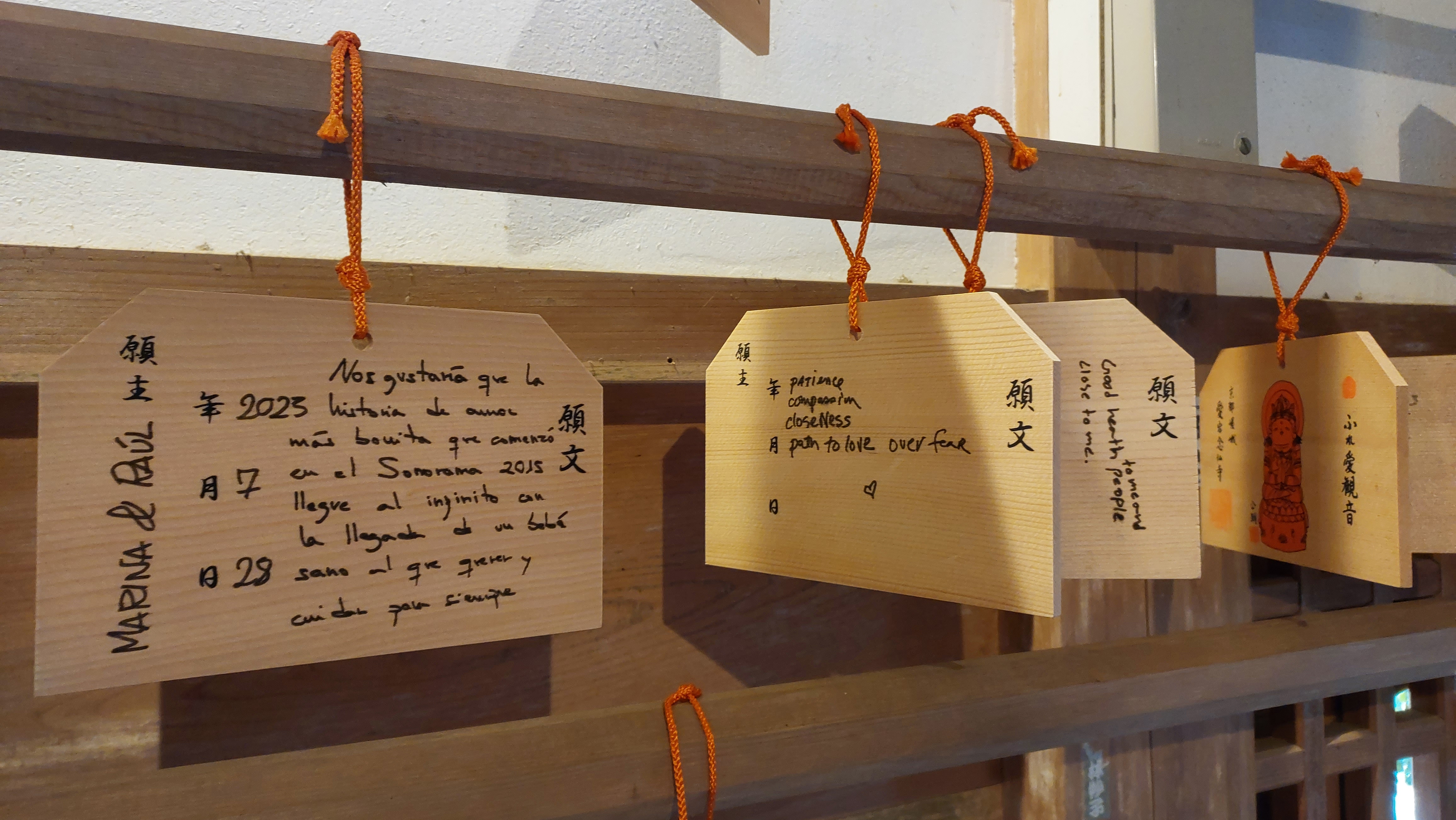
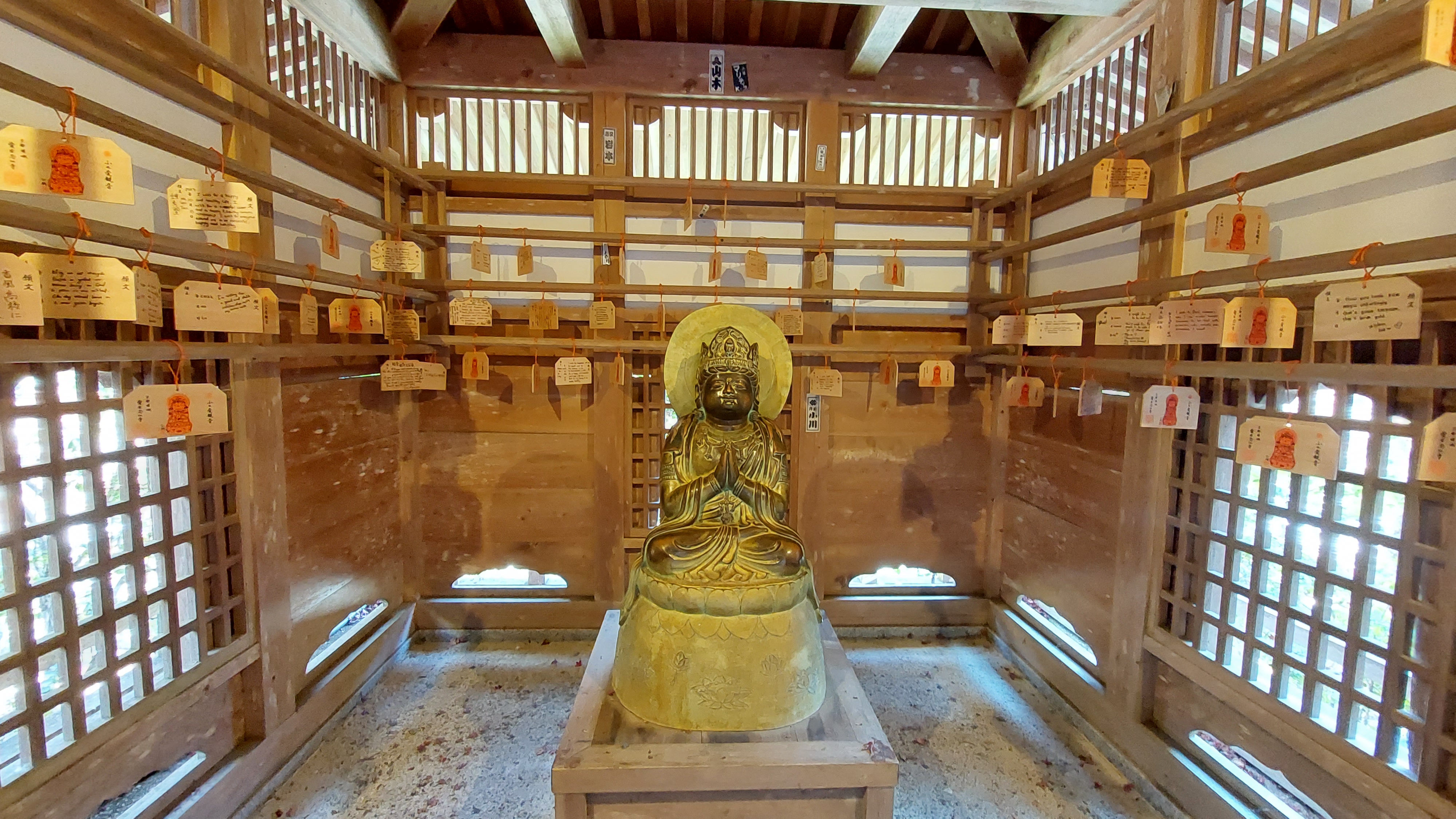
Otagi Nenbutsuji has a couple of small shrines dotted across its grounds such as the “Fureai Kannon”. This shrine with a gold colored statue of Kannon Boddhisatva was made by Nishimura specially for people who are blind.
Most buddhist temples only allow worshippers and visitors to look at religious artwork from a distance but Otagi Nenbutsuji closes this gap by allowing the visitor to stand close and touch the statue in a gesture of gratitude reflecting the nature of a mutual “give and take”.
The shrine also encourages you to pray for healing by touching the parts of Kannon’s body that ail you as well as asking her to help you find a partner for a happy and prosperous marriage.
Step Into The Prayer Hall
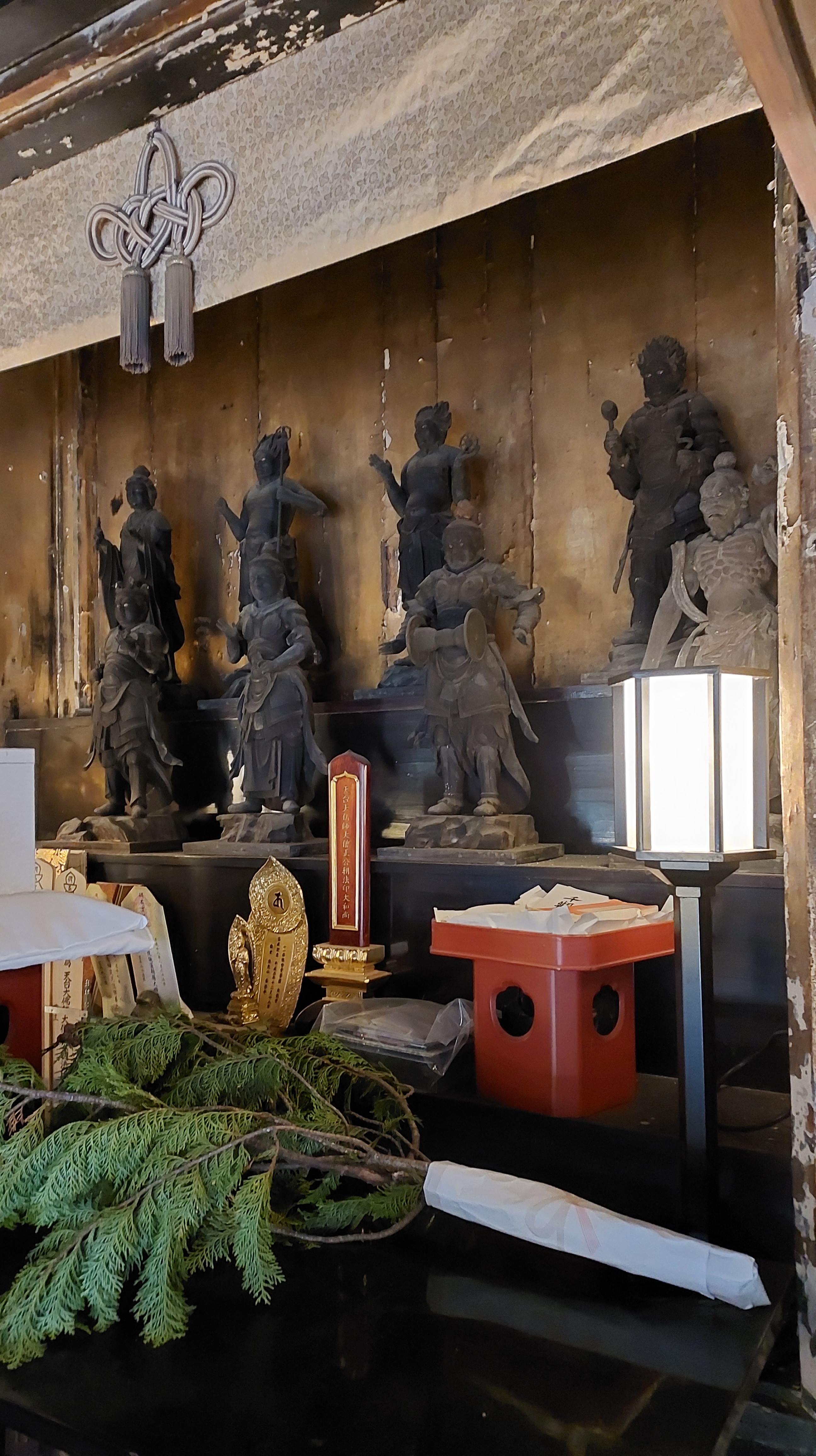
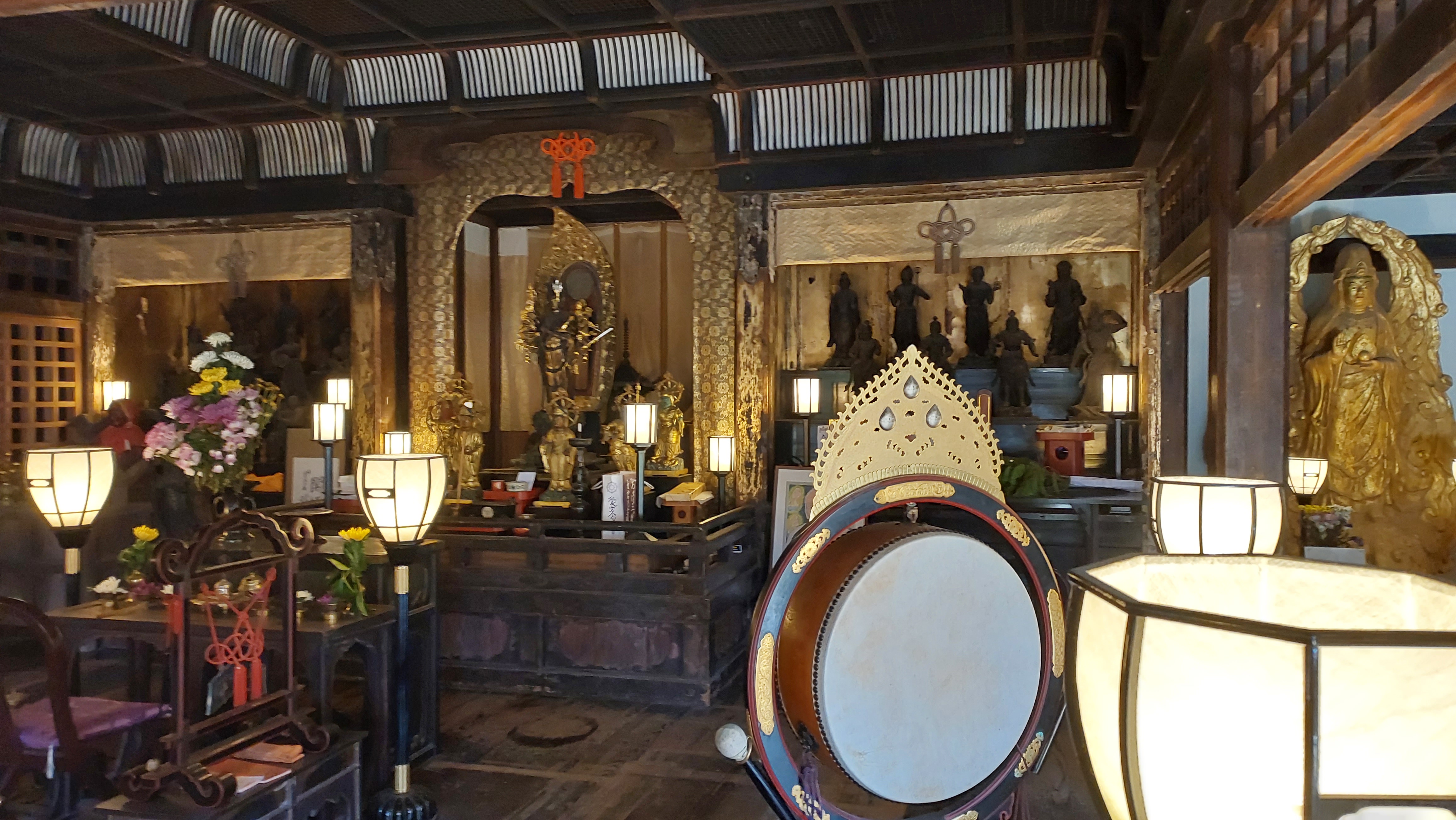
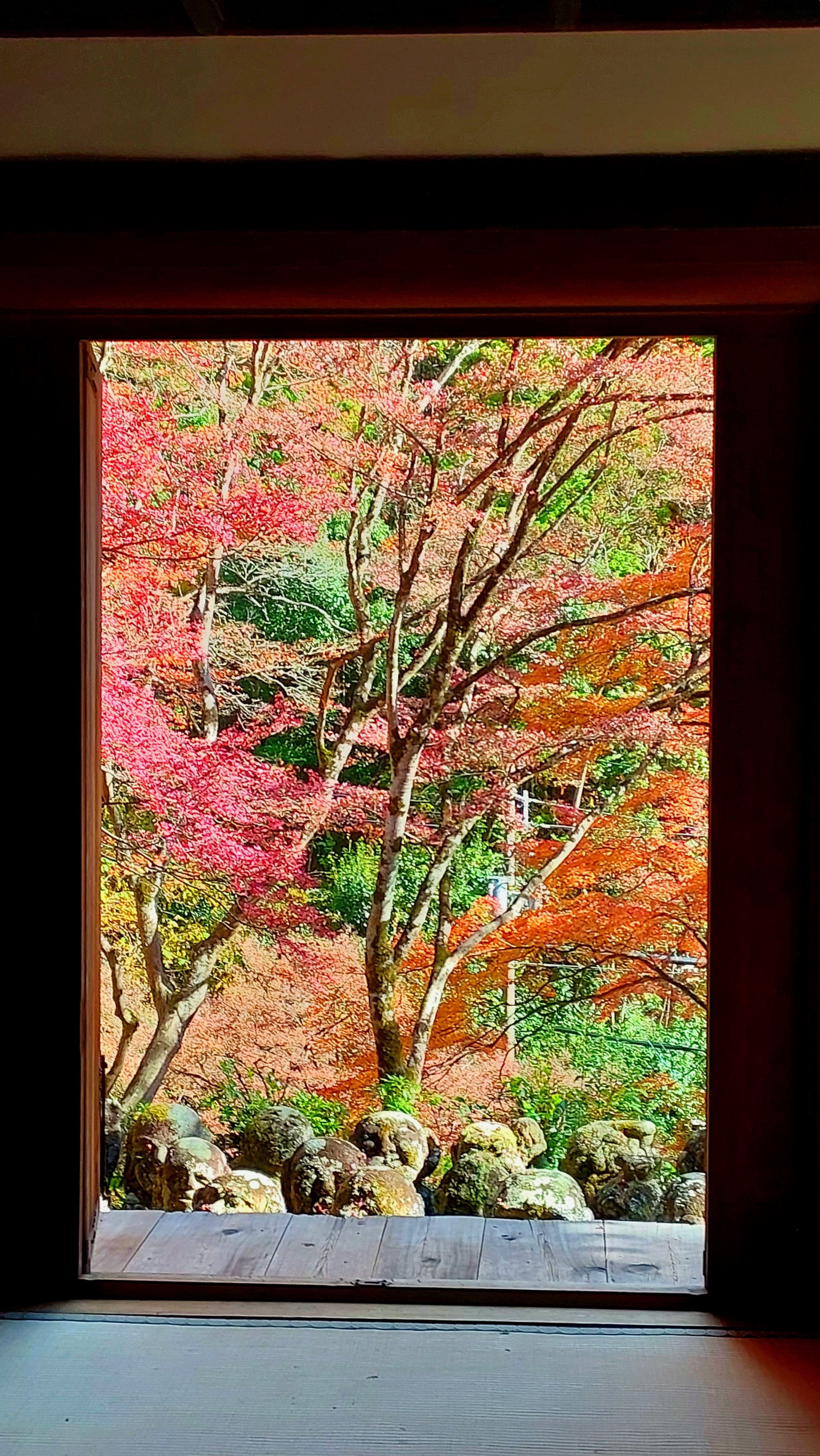
Otagi Nenbutsuji’s main prayer hall was built back in the Kamakura Period (year 1185). It’s exterior and interior is both in its traditional style with tatami floors and sliding doors.
The temple’s halls are said to enshrine the thousand-armed Yakuyoke Senju Kannon, who is the protector of evil spirits and the Hiyoke Jizo Bosatsu, the Bodhisattva that stands for protection against fire. Visitors can sit in front of the buddha statues in the quiet hall to relish in its peaceful and meditating atmosphere.
The hall also provides a breath-taking view of the rakan statues on the temple’s side with the gorgeous autumn foliage trees standing tall and dense behind the statues.
Otagi Nenbutsuji Autumn Festival

An underappreciated and lesser-known autumn festival in Japan, Otagi Nenbutsuji Autumn Festival is where you can witness performers dressed as Tengus (Japanese crow demons for the good), making their way into the crowd while carrying wooden boards, bows and arrows.
After a brief swoop-in and interactions with the crowd, the Tengus draw their bow and arrow and shoot them through the sky. If you happen to find a fallen arrow of the Tengu then it is said that luck and fortune will always be with you.
While the Tengu performance is in Otagi, there is a temple and mountain dedicated to these sacred demons at Mount Takao in Tokyo.
Other than the autumn festival, you can also check out Otagi temple’s new year and sacred bonfire events on their official website.
Buy Charms for Fortune or Marriage
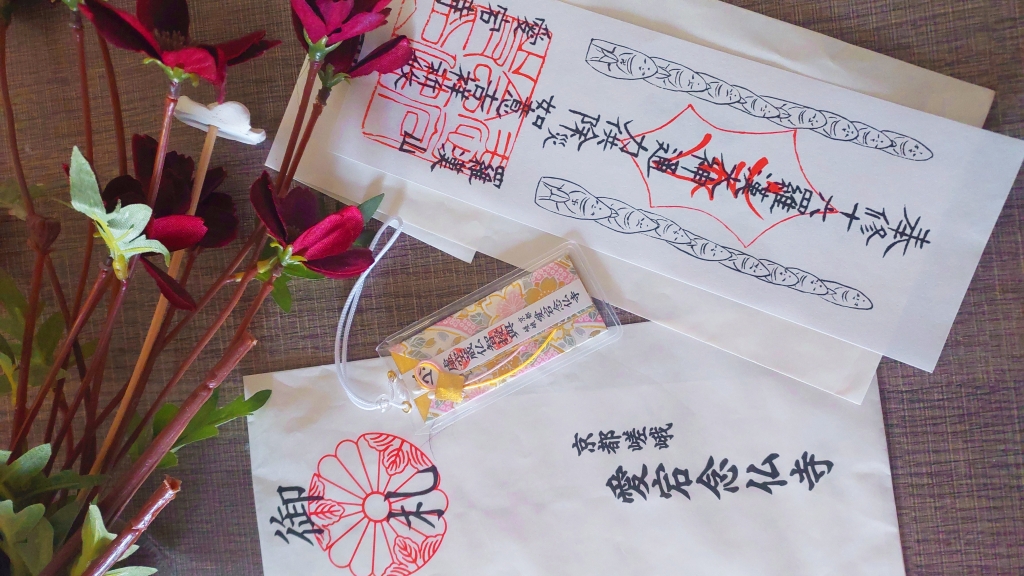
Photo Credit: Ameena Navab
Before you plan to leave the temple, stop at the ticket counter and purchase some charms that you can take back home as souvenirs. These costs as low as 400-500 yen and helps keep luck on your side. You can choose between charms that protects you from sickness, luck for business and wealth and one that will help you find love and a good marriage partner.
Written in Japanese calligraphy style, these charms are a beautiful work of words while also bringing some positive energy to your space. It’s also a great souvenir to take back home.
Customize your dream Japan trip by leaving the hectic planning to us
How to get there
Otagi Nenbutsuji is in Arashiyama which means you need to take the train from Kyoto station to Arashiyama station. From there, you can either take a taxi which costs roughly 2000 yen or you can take the bus (check on google maps) that takes you to the entrance of the temple.
If you prefer to walk, it takes roughly 40-50 minutes to walk uphill towards Otagi Nenbutsuji temple. We advise you to order a pocket wifi or an e-sim to route your journey easily.
Disclaimer: This post contains affiliate links to Klook and viator. AWO gets a small commission from your purchases at no extra cost to you
*********
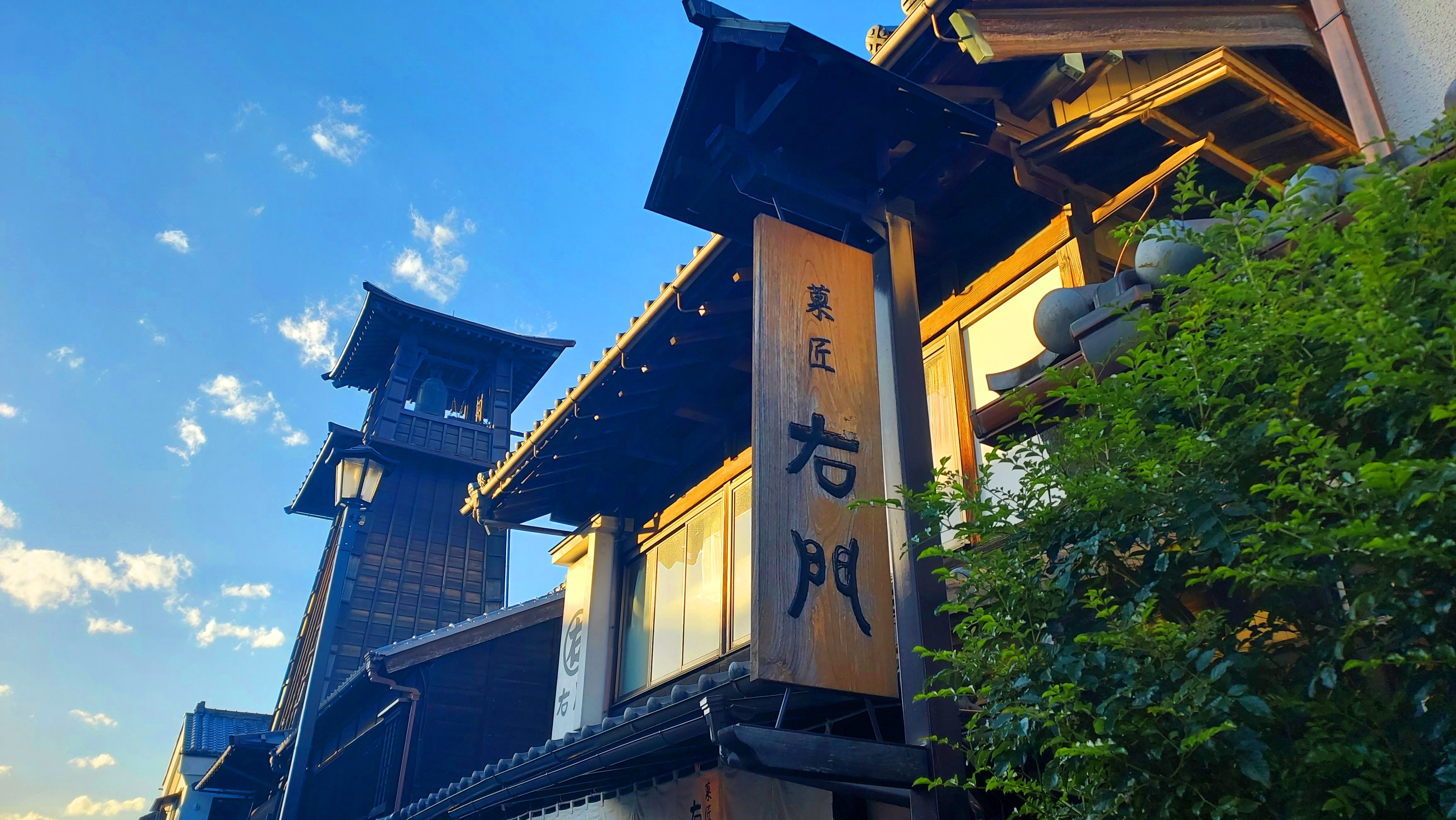
About At World’s Origins
Discover places from your favorite movies,
have an adventure through thick jungles and
explore ancient cities like an archaeologist
Newsletter
Get the latest info directly in your inbox and be the first
one to know about under the radar locations, great hotel deals in your fav cities, tour packages and awesome exclusive AWO merchandises.


Nice
LikeLiked by 1 person